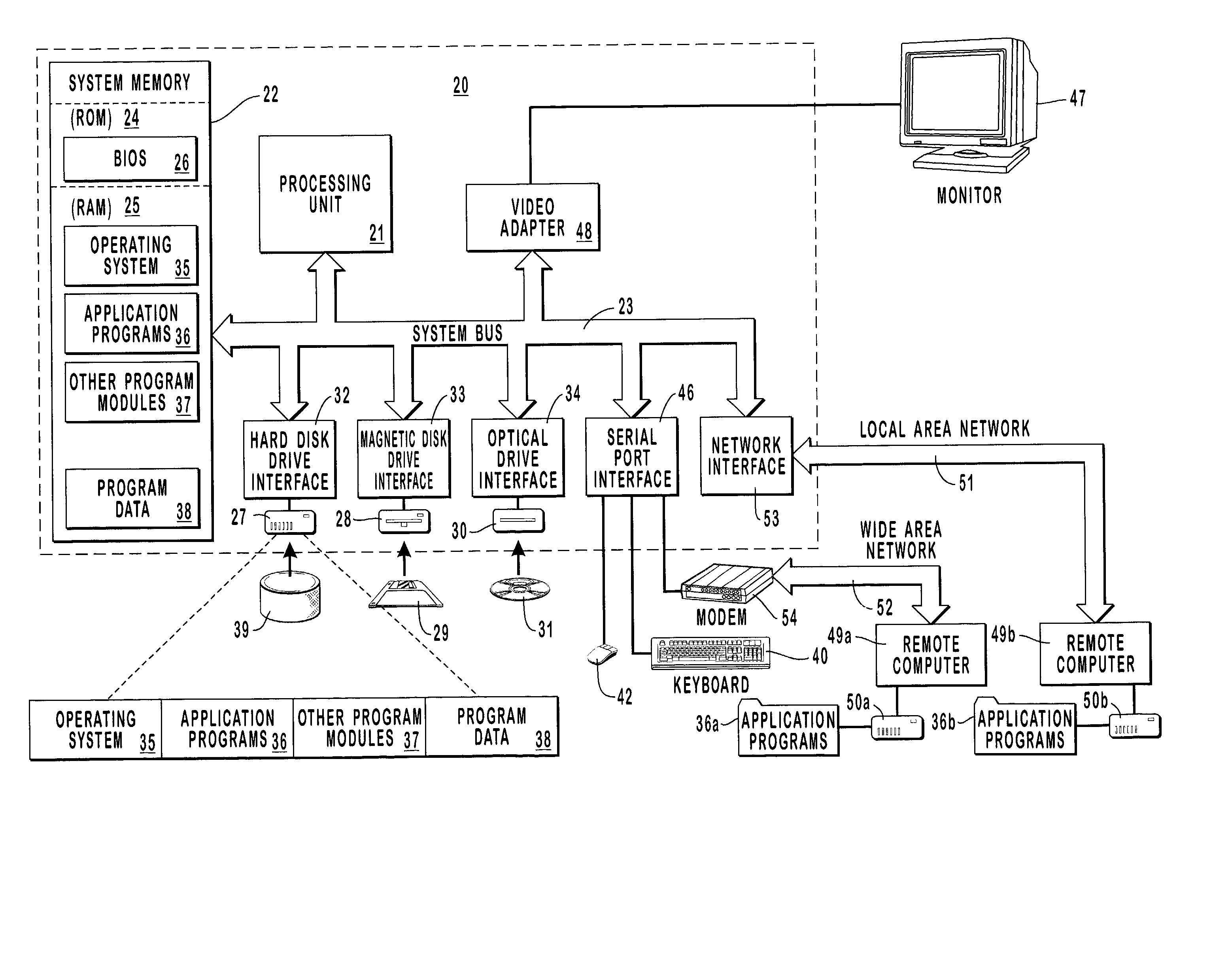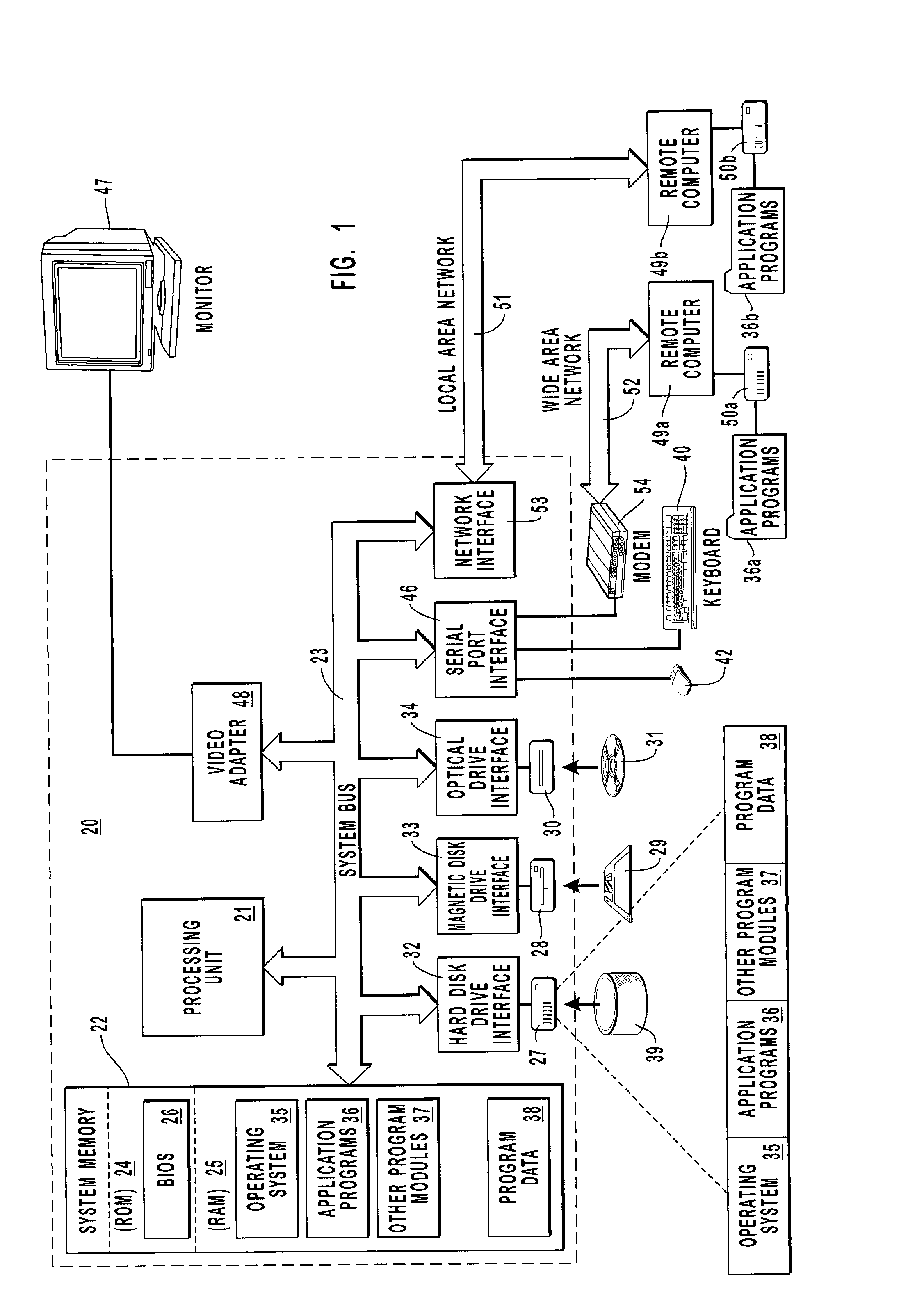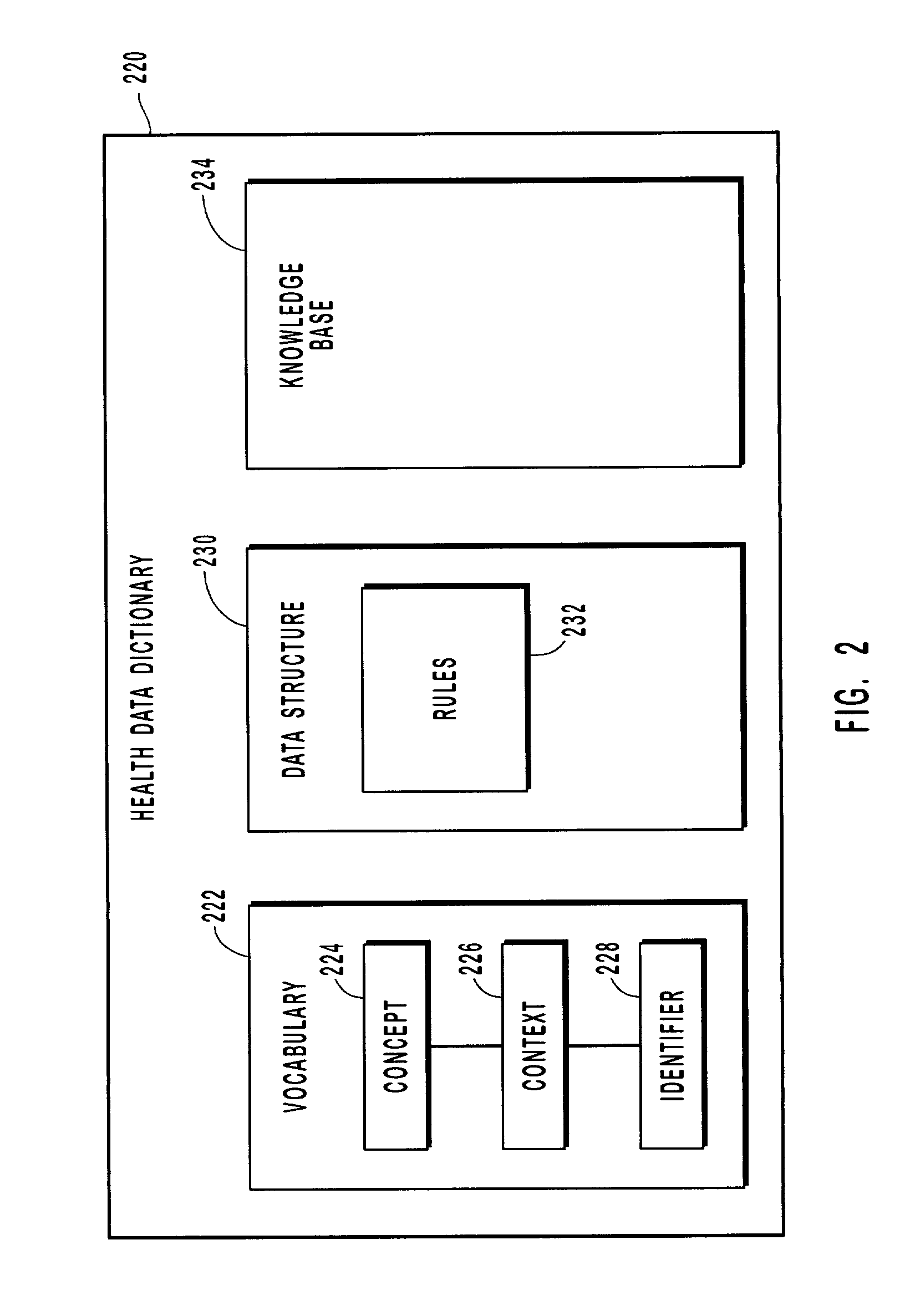Managing relationships between unique concepts in a database
a database and unique concept technology, applied in the field of database, can solve the problems of limiting the usability of the database storing cprs, clinical data is less usable, and the medical community is still faced with the problem of processing and evaluating cprs
- Summary
- Abstract
- Description
- Claims
- Application Information
AI Technical Summary
Problems solved by technology
Method used
Image
Examples
Embodiment Construction
[0022] The present invention relates to systems and methods for translating clinical data and more specifically to managing relationships in a health data dictionary (HDD). The HDD contains concepts, each of which is a unique item or idea. The concepts are grouped according to contexts or domains and are used to translate clinical data. The relationships between the concepts are quite complex and are described in a knowledge base of the HDD. Often, relationship tables are used to describe the relationships. The present invention extends to systems and methods for reviewing, editing, updating, and maintaining the relationships of the HDD.
[0023] As used herein, clinical, medical or patient data refers to data that is associated with a patient and can include, but is not limited to, pharmaceutical data, laboratory results, diagnoses, symptoms, insurance data, personal information, demographic data, physical locations, beds, rooms, nursing divisions, facilities, buildings and the like. ...
PUM
 Login to View More
Login to View More Abstract
Description
Claims
Application Information
 Login to View More
Login to View More - R&D
- Intellectual Property
- Life Sciences
- Materials
- Tech Scout
- Unparalleled Data Quality
- Higher Quality Content
- 60% Fewer Hallucinations
Browse by: Latest US Patents, China's latest patents, Technical Efficacy Thesaurus, Application Domain, Technology Topic, Popular Technical Reports.
© 2025 PatSnap. All rights reserved.Legal|Privacy policy|Modern Slavery Act Transparency Statement|Sitemap|About US| Contact US: help@patsnap.com



